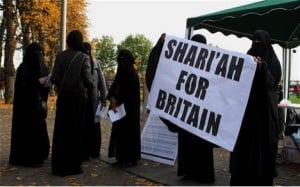As I snuggled on the couch to watch HBO’s documentary on Neda Agha-Soltan, I knew this wasn’t the time for popcorn. The first images that splashed across the screen were Agha-Soltan’s infamous last moments, which haunted viewers around the world exactly a year ago. The tone of onlookers and loved ones was agonizing, screaming as they crowded around her body, placing their hands over the bullet hole in her chest. As blood began to gush from her mouth and nose, Agha-Soltan’s eyes remained open. It was only a few moments before she died, but the video burned a memory in the hearts of many that will perhaps last for years to come.
The images of Agha-Soltan’s last moments were perhaps the most impressing images of the brutality and violence that unfolded after last year’s Iranian elections. Cell phone cameras and digital cameras became the weapon of choice for many of Iran’s population. They wanted to show the world the injustice they were suffering at the hands of the Islamic Republic of Iran.
HBO’s documentary For Neda delves into the life of Agha-Soltan to answer the questions of who she was, what she stood for, and why she died. The documentary elicits the testimony of Agha-Soltan’s family and recognized names such as Azar Nafisi, author of Reading Lolita in Tehran, and Dr. Ali Ansari, Professor of Iranian history at University of St. Andrews. The familiar voice of Shohreh Aghdashloo, an Iranian actress, narrates Agha-Soltan’s tale of courage. (Note: the trailer below contains explicit images of her death)
For Neda provides a limited understanding of the socio-political landscape of Iran and elicits only the testimony and experiences of those with a particular angle. The story of Neda Agha-Soltan was used here to paint a particular picture of Iran seen from the eyes of a certain kind of woman–a woman like Agha-Soltan.
For Iranian women who neither look like Agha-Soltan nor held the same desires or religious or political values as she, the documentary may be marginalizing. For Iranian women who are not like “any girl, anywhere,” it sends the message that their stories are not valued enough to be told and the injustices they face are not worthy of international attention. The diverse political and religious opinions of Iran’s population make it highly unlikely that any one woman could be the “face of the revolution.”
Agha-Soltan was described in the documentary as “a free spirit that is confined by a regime that does not value these qualities in a woman.” She is portrayed as an ordinary girl who loved to dance, listen to music, read books, and who wanted to be loved. Aghdashloo narrates, “In so many ways, any girl, anywhere, but this wasn’t anywhere, this was the Islamic republic of Iran, where even the clothes you wear have a political meaning.”
In between narrated commentary on the politics and status of women in Iran, the documentary gives a look into the life of Agha-Soltan through the testimony of her immediate family. Her story was used as platform to speak about the general status of women in Iran: Googoosh, a superstar who sought asylum outside Iran, and Rudi Bakhtiar of the International Campaign for Human Rights in Iran give their testimonies of living in Iran post-revolution. Both women offer the same perspective on the treatment of women in Iran and echo the same sentiments about the regime.
Nafisi posits that women seem to be irreligious as a result of the Iranian regime’s hijacking of religion, which translated into government control over women’s clothing. This was unbearable for Agha-Soltan, whose mother points out that she refused to wear the chador in school. There is only one picture shown of Agha-Soltan wearing hijab, perhaps to garner sympathy by reinforcing this sentiment that she was like any other woman and had to abide by Iran’s dress code.
I wondered if Agha-Soltan were pictured wearing the chador, would viewers feel as though they could identify with her? Would she have amassed such support? Or would she have been like many other women who died that year: forgotten? What about other women who were killed during this time? Why weren’t their names and images splashed all over the media and celebrated internationally?
In the days of protesting that followed the elections, Agha-Soltan was approached by three Basij women who said to her, “Dear, don’t come out looking so beautiful… do us a favor and don’t come out because Basiji men target beautiful girls and they will shoot you.”
These disturbingly ominous words, expressed that men, feeling threatened–in this case by a woman’s beauty–place the responsibility of the destruction of religious values on women and therefore attempt to make women invisible or disappear in order to preserve religion and culture.
On, June 20, 2009, this is what happened. However, the attempt to make Agha-Soltan disappear or to make her invisible was to no avail after the video of her death surfaced. Agha-Soltan, a girl like “any girl,” became a martyr. Activists and photojournalists like Reza Deghati went to task making “Neda masks.” They were distributed to over 100 capital cities around the world and were worn by protesters chanting, “We are Neda!”
The video of her death was one among many shocking videos; but unlike the other videos, the video of Agha-Soltan’s death were widely used to garner public sympathy. HBO’s documentary leaves the impression that Agha-Soltan became “the face of the revolution” mainly because she was like any girl anywhere. Through her death, she was able to focus international attention on the violence in Iran and elicit a response from international leaders.
However, Neda Agha-Soltan only represents one of the many faces of Iranian women and of the revolution. Had this been another face, a different Iranian woman, the international response and HBO’s documentary may have been very different.











